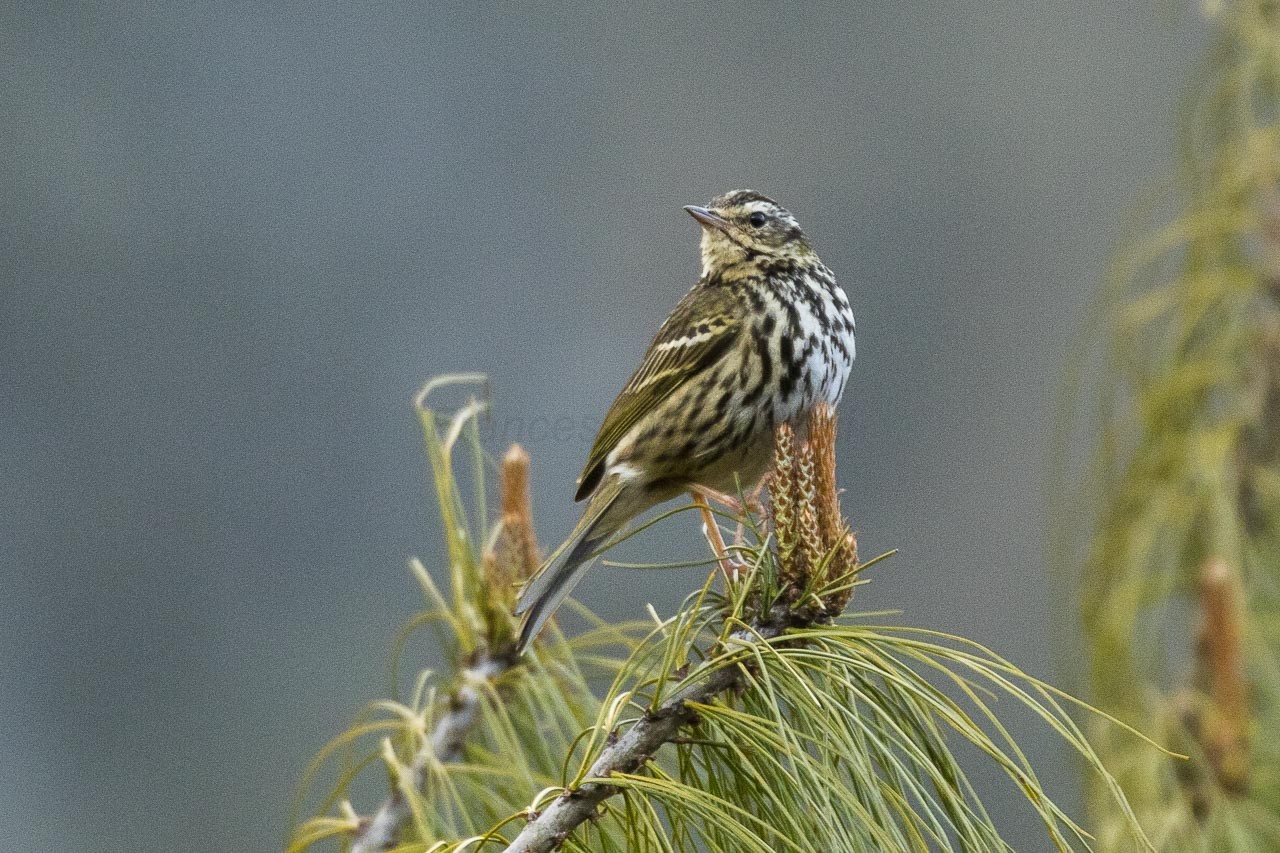Olive-backed Pipit
A species of Pipits Scientific name : Anthus hodgsoni Genus : Pipits
Olive-backed Pipit, A species of Pipits
Botanical name: Anthus hodgsoni
Genus: Pipits
Content
Description People often ask General Info
 Photo By Francesco Veronesi , used under CC-BY-SA-2.0 /Cropped and compressed from original
Photo By Francesco Veronesi , used under CC-BY-SA-2.0 /Cropped and compressed from original Description
Size: Sparrow+ (ca. 15 cm) Appearance: Greenish brown streaked with darker brown above. Supercilium, double wingbar and outer rectrices whitish. Whitish to buff below streaked with dark brown on breast and flanks. Sexes alike. Habits: Seen singly or pairs. Runs about on the ground in search of food and flies up into trees when disturbed. Flight jerky and undulating. Call: Song lark-like and uttered on the wing, similar to the tree pipit, but faster and higher pitched. A single tseep or spek, also similar to the tree pipit. Food: Insects, grass and weed seeds. Food: Largely insects, but will also take seeds. 
Size
15-19 cm (6-7.6 in)
Colors
Black
Green
Bronze
Gray
White
Nest Placement
Ground
Feeding Habits
Olive-backed Pipit, primarily an insectivore, consumes insects, along with grass and weed seeds. It forages on the ground with adept pecking maneuvers, often tailored to its diet diversity. No unique dietary adaptations noted.
Habitat
The olive-backed Pipit's habitat is diverse, including evergreen forests, open woodlands of oak and pine, and grassy, rocky slopes. They inhabit the fringes of taiga, secondary growths, and agricultural lands with trees. During breeding, they ascend to high-altitude scrublands, even above the timberline, adapting to areas up to 4000 meters in the Himalayas. In off-seasons, these birds prefer lower-altitude groves and plantations.
Dite type
Insectivorous
People often ask
General Info
Feeding Habits
Bird food type
Distribution Area
Summer: from Himalayan Pakistan and India, westward through Nepal, into China, north to Gansu province, and eastwards through Korea to Japan, and north through north central Asia into north-eastern Europe (European Russia). Occasionally a rare vagrant in western Europe. Breeds up to 4500m in eastern Nepal. Winter: Broad southern region across Asia, from peninsular India, east to Southeast Asia and the Philippines. Habitat: Affects open country. Wintering in evergreen woodland, Summers in groves and wooded biotope. 
Species Status
Not globally threatened.
Scientific Classification
Phylum
Chordates Class
Birds Order
Perching birds Family
Wagtails Genus
Pipits Species
Olive-backed Pipit